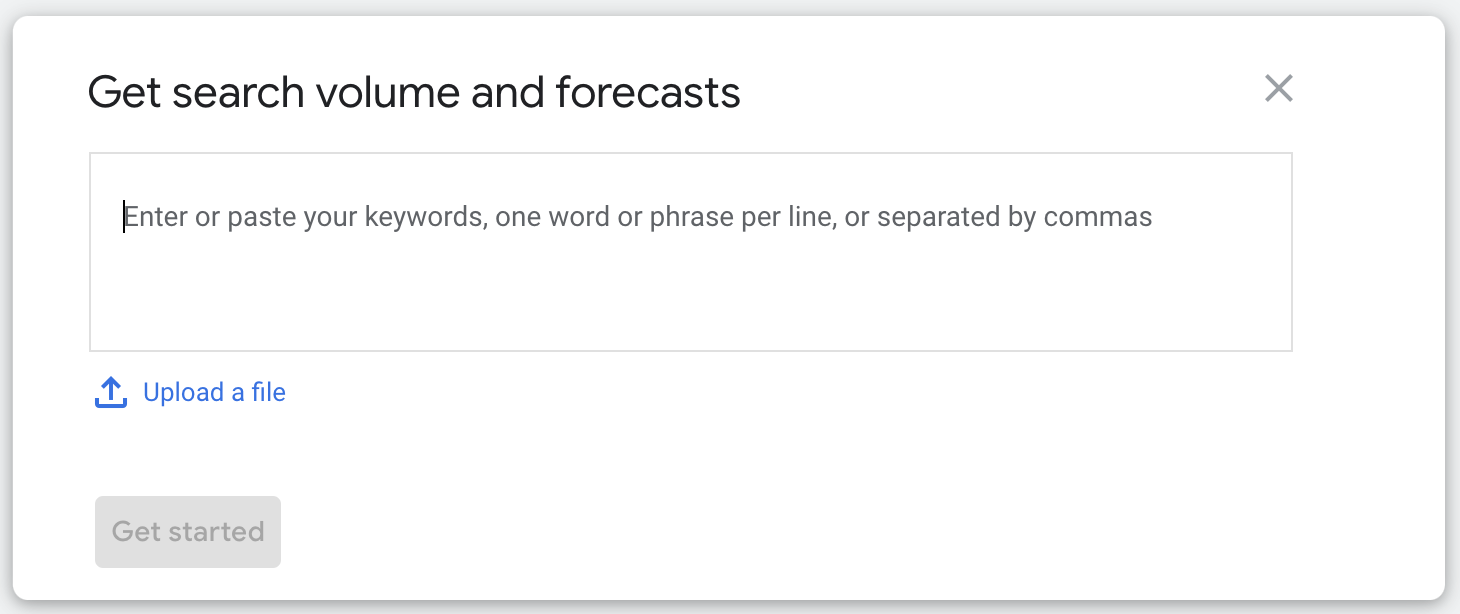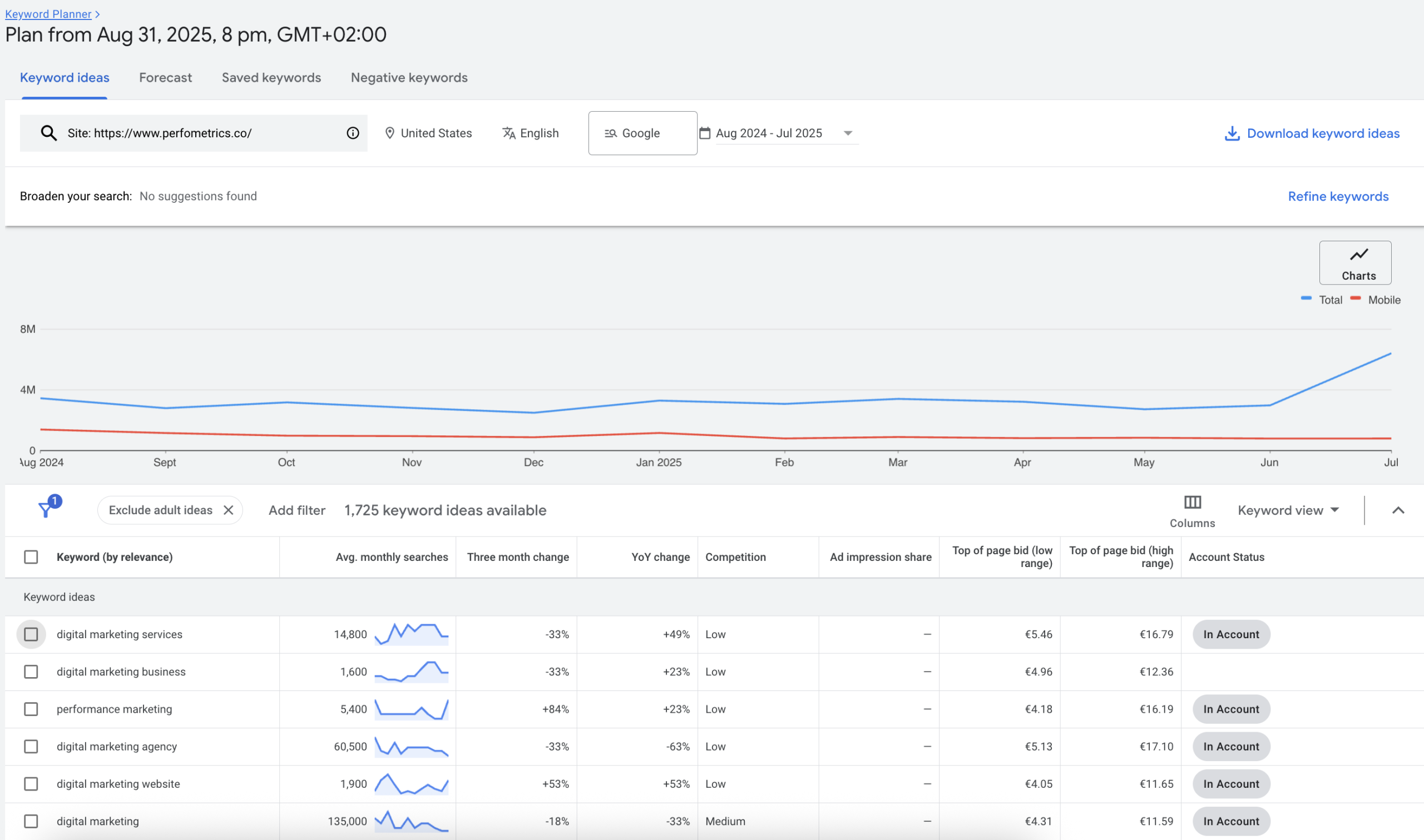What Is Google Ads Keyword Planner? A Clear, No-Nonsense Guide for Beginners

You’ve heard the advice a thousand times: “You need to do keyword research.” It’s the first step, the foundation, the non-negotiable starting point for anyone who wants to be found online. But this advice often comes with a frustratingly vague follow-up, leaving you lost in a sea of complex tools, confusing jargon, and conflicting tutorials. You’re a frustrated beginner looking for a quick, reliable solution, and all you want is a straight answer to a simple question: Where do you even begin?
You begin here. You begin with the source.
We’re going to focus exclusively on Google’s own tool, the Google Keyword Planner. Think of this as the antidote to confusion. We will walk through exactly what this tool is, what it was built for, how you can use it, and what its data actually means for your strategy. There are no upsells, no complex methodologies, just a clear, authoritative explanation.
By the end of this article, you will have a complete and nuanced understanding of what Google Keyword Planner is. You will know who it’s for, what its core features do, how to interpret its most important data, and the fundamental role it plays in any successful digital marketing strategy, whether you’re focused on content, SEO, or paid advertising.
The Simple Definition: What Is Google Ads Keyword Planner?
At its most basic level, Google Keyword Planner is a free research tool provided by Google that helps you discover new keywords related to your business and see estimates of the searches they receive and the cost to target them.1 It’s housed within the Google Ads platform (formerly known as Google AdWords) and serves as a foundational resource for advertisers, marketers, and website owners looking to improve their online presence.3
Imagine you could listen in on the questions and phrases billions of people type into Google every day. That’s essentially what Keyword Planner allows you to do. It’s a direct line to understanding the exact language your potential customers are using when they search for the products, services, or information you offer.3
For a beginner, it’s best to think of the tool as having two fundamental purposes that work in tandem:
- Discovery: Its first job is to help you discover new keyword ideas. You can search for words or phrases related to your business, and the tool will help you find the most relevant keywords you might not have considered.5 This is the brainstorming and idea-generation phase, designed to broaden your perspective and uncover hidden opportunities.3
- Analysis & Estimation: Its second job is to help you analyze those keywords. The tool provides crucial data, giving you insight into how often people search for certain terms and how those search trends have changed over time.5 It provides estimates for search volume (popularity) and suggested bids (commercial value), which helps you make informed decisions about which keywords are worth pursuing.1
The true power of Google Keyword Planner, especially for someone just starting, is not just that it generates lists of words. Its real value is in acting as a “demand compass.” Many beginners start by guessing what people search for, often using internal business jargon or assumptions about their audience. This tool shifts your entire perspective. Instead of pushing your own language onto the market, it allows you to see where user attention and demand already exist. It validates whether people are actually looking for the solutions you provide, transforming your strategy from one based on guesswork to one grounded in real-world data.
Who Is the Keyword Planner Actually For? (And Is It Right for You?)
One of the biggest sources of confusion for newcomers is understanding the tool’s dual identity. You’ll hear it mentioned constantly in both advertising and SEO circles, and it’s essential to understand why.
Its Origin Story: A Tool Built for Advertisers
First and foremost, you need to know that Google Keyword Planner was designed 100% with Pay-Per-Click (PPC) advertisers in mind.9 It is a core component of the Google Ads platform, and its primary purpose is to help advertisers research and select the best keywords for their paid search campaigns.3
Every feature within the tool was originally created to answer an advertiser’s questions:
- “Which keywords should I bid on to reach my target audience?”
- “How many people are searching for these terms?”
- “How much will it cost me per click to show my ad for these keywords?”
- “How much competition is there from other advertisers?”
This is why you’ll see metrics like suggested bid, competition, and forecasts for clicks and costs. These data points are all directly related to the process of planning an advertising budget and launching a campaign on Google.5 The tool’s entire workflow is centered around helping you find keywords, estimate their performance in a paid campaign, and then add them directly to your advertising plan.6
Its “Accidental” Power: Why SEOs and Content Creators Rely on It
Despite its PPC-centric design, Google Keyword Planner is an absolutely essential and powerful tool for anyone focused on Search Engine Optimization (SEO) and content creation.11 The reason is simple: whether you are paying for traffic (PPC) or earning it organically (SEO), you are targeting the same pool of users searching on Google. Understanding what those users are looking for is the foundation of both disciplines.14
SEOs and content marketers use the tool because it provides invaluable data directly from the source, Google itself.11 They use it to:
- Discover content topics: Find out what questions people are asking and what information they need.
- Plan website structure: Identify the core themes and sub-topics that a website should cover to be seen as an authority.
- Optimize individual pages: Ensure that the language used on a webpage matches the language users are searching with.
- Understand search intent: Gauge whether a user is looking to learn something, buy something, or find a specific website.
This shared foundation creates a powerful symbiotic relationship between the tool’s PPC data and a smart SEO strategy. While an SEO professional might ignore the direct cost implications of a bid, they pay very close attention to the bid value itself. Why? Because the amount of money an advertiser is willing to pay for a click is a direct proxy for that keyword’s commercial intent.
Advertisers don’t spend significant money on keywords that don’t lead to sales, leads, or other valuable business outcomes. Therefore, when an SEO sees a keyword with a high “Top of page bid,” it signals that the traffic from that keyword is likely very valuable. A keyword with 1,000 monthly searches and a $15 suggested bid is often a much higher strategic priority for a business than a keyword with 10,000 searches and a $0.50 bid. This allows you to move beyond simply chasing traffic volume and start targeting traffic that drives real business results, a crucial leap in strategic thinking.
The Two Main Features You’ll Actually Use
When you first open Google Keyword Planner, you are presented with two main options. To avoid feeling overwhelmed, it’s best to think of these as two distinct workflows designed for two different tasks.9

Feature 1: “Discover New Keywords” (Your Brainstorming Engine)
This is your starting point for exploration and creativity. You use this feature when you have a general idea or topic but need to find the specific words and phrases people are actually typing into the search bar. This path then splits into two methods.
Path A: “Start with keywords”
- How it works: You enter up to 10 “seed” keywords or phrases that are central to your business or content idea. For example, if you sell artisanal coffee, you might enter “specialty coffee,” “single origin beans,” and “pour over coffee.” Google then uses its vast database to generate a list of hundreds or even thousands of related keyword ideas.1
- Best for: This method is ideal for expanding on a core concept. It helps you discover long-tail keywords (more specific, multi-word phrases), understand the different angles from which people approach a topic, and build out a comprehensive list of terms to inform a content calendar or an ad campaign structure.

Path B: “Start with a website”
- How it works: Instead of entering keywords, you enter a website URL. This can be a specific page on your own site, your entire website, or, most powerfully, the URL of a competitor.1 The tool will analyze the content on that URL and suggest keywords that it deems relevant.16
- Best for: This is an incredibly effective technique for competitive analysis. By entering a competitor’s URL, you can quickly uncover the keywords they are likely targeting.17 This helps you identify potential “keyword gaps”, valuable terms your competitors are ranking for that you may have overlooked, giving you a strategic roadmap for creating content to compete with them.4

Feature 2: “Get Search Volume and Forecasts” (Your Validation Tool)
This is your go-to feature for analysis and validation. You use this when you already have a list of keywords and simply need to get data on them.
- How it works: You can copy and paste a list of keywords you’ve already compiled (perhaps from brainstorming or another tool) directly into the search field. The tool will then return data specifically for the keywords you entered, without suggesting new ones.9
- What “Forecasts” Means: It’s important to understand that the “forecast” component of this feature is designed almost exclusively for PPC advertisers. Based on your list of keywords, it will project potential performance metrics like the number of clicks and impressions you might receive over the next 30 days. These projections are based on a hypothetical ad budget and bid strategy that you can adjust.1 For a pure SEO strategy, this forecast data is not directly actionable, but the search volume data provided is still extremely valuable.

Understanding the Key Data: What the Columns Really Mean
Once you’ve generated a list of keywords, you’ll be faced with a table of data. For a beginner, these columns can be intimidating and even misleading if not properly understood. The following table breaks down the four most important metrics, explaining what they literally mean and, more importantly, what they mean for your strategy.

| Metric Name | What Google Means (The Literal Definition) | What It Means for You (The Strategic Interpretation) |
| Avg. Monthly Searches | An estimated average of how many times this exact keyword (and its close variants like plurals) is searched for per month in your specified location and language. This is typically calculated over a 12-month period to smooth out seasonal fluctuations.10 | This is your primary indicator of search demand or topic popularity. A higher number means more potential traffic can be driven to your site. However, high volume often correlates with high competition, so this metric helps you prioritize which keywords offer the best balance of opportunity and attainability. |
| Competition (Low, Medium, High) | This metric refers exclusively to the number of advertisers currently bidding on this specific keyword within Google Ads. It has absolutely nothing to do with how difficult it is to rank organically in SEO.9 “High” simply means many advertisers are competing for that ad space. | For an SEO strategy, you should largely ignore this column as a measure of ranking difficulty. However, it can serve as a useful secondary signal for commercial value. “High” competition confirms that many businesses believe this keyword is profitable enough to spend money on, indirectly validating its importance. |
| Top of Page Bid (Low Range) | This shows the lower end of what advertisers have historically paid, per click, for their ad to appear at the top of the search results page for this keyword.10 | This is your single best proxy for commercial intent. Even a relatively low bid (e.g., over $1.00) suggests that the person searching has some level of intent to research a purchase, find a service, or take a commercial action. It helps you separate purely informational keywords from valuable transactional ones. |
| Top of Page Bid (High Range) | This shows the higher end of what advertisers have historically paid, per click, for a top-of-page ad placement for this keyword.10 | A very high number in this column is a powerful signal that this keyword drives extremely profitable traffic. For an SEO campaign, achieving a top organic ranking for a term with a high “Top of Page Bid” can be exceptionally valuable to a business’s bottom line. |
Is Google Keyword Planner Really Free? The Important Catch
This is one of the most critical points to understand to avoid frustration. The tool is often advertised as free, and in a technical sense, it is. However, there is a significant catch that every new user must be aware of.
The Technical Answer: Yes, It’s Free to Access
To be clear, you can access and use Google Keyword Planner without paying a cent.1 All you need is a Google account to set up a Google Ads account. You are
not required to run an active, paying ad campaign to use the planner for research.9 This makes it an incredibly accessible starting point for anyone.
The Practical Answer: The “Pay-to-Play” Data Limitation
Here is the crucial caveat: if you do not have an active Google Ads account with some level of recent ad spend, the tool will not show you precise search volume data. Instead of seeing an exact number like “8,100 searches per month,” you will see a broad and often unhelpful range, such as “1K–10K” or “10K–100K”.10
Google does this to incentivize users to become paying advertisers; the tool’s full precision and granularity are reserved for active customers. For a beginner, this can be a major source of confusion.
However, this limitation isn’t necessarily a deal-breaker. For initial brainstorming and directional analysis, the ranges are sufficient. They can still help you understand that a keyword in the “10K–100K” range is significantly more popular than one in the “100–1K” range. But for precise content planning, traffic forecasting, and prioritizing between keywords that fall within the same range, this lack of specificity is a significant handicap.
This “catch” almost serves as a natural litmus test for your commitment to digital marketing. When you first encounter the vague data ranges, you are faced with a choice. If you are a casual blogger or just exploring a topic, the ranges may be all you need. But if you are building a business and relying on search traffic for growth, the need for precise data becomes immediately apparent. This moment often pushes serious marketers to either run a small, continuous ad campaign to unlock the exact data or to invest in a specialized third-party SEO tool that provides it. In this way, the tool’s limitation acts as a catalyst, forcing you to evaluate the ROI of precision data and professionalize your approach to keyword research.
The Bottom Line: What Is Google Keyword Planner’s Role in Your Strategy?
After breaking down its features, data, and limitations, what is the ultimate role of Google Keyword Planner in your digital marketing strategy?
It is your foundational first step. Before you invest in expensive tools or complex methodologies, you should always start here. It provides a baseline understanding of the search landscape directly from the source, giving you raw data on what your audience is looking for.16
It is a tool for understanding, not just for lists. Its greatest power lies not in the volume of keywords it can generate, but in its ability to help you understand the language of your audience and the intent behind their searches.3 Effective marketing is built on empathy, and this tool is one of the best ways to build empathy with the searcher.
Finally, it is the hub of a larger process. While it is the perfect starting point, it is not the only step. Advanced marketers often use Keyword Planner to generate a large pool of initial ideas and get directional volume data. They then export that list and use more specialized SEO tools to analyze factors that Keyword Planner doesn’t cover, such as organic ranking difficulty, backlink profiles, and SERP feature opportunities.
Conclusion
Google Keyword Planner is an essential, powerful, and free resource that serves as the official entry point into the world of search. It demystifies user behavior by showing you precisely what your audience is searching for. It validates your business and content ideas with real-world data, and it provides the raw material you need to build an advertising or SEO strategy that truly connects with the people you want to reach. By understanding its purpose, its data, and its limitations, you can transform it from a confusing dashboard into your most trusted guide for navigating the digital landscape.
Works cited
Use Keyword Planner – Google Ads Help, accessed on August 31, 2025, https://support.google.com/google-ads/answer/7337243?hl=en
support.google.com, accessed on August 31, 2025, https://support.google.com/google-ads/answer/7337243?hl=en#:~:text=Keyword%20Planner%20helps%20you%20research,the%20cost%20to%20target%20them.
Google Keyword Planner – GeeksforGeeks, accessed on August 31, 2025, https://www.geeksforgeeks.org/techtips/google-keyword-planner/
What is Google ads keyword planner? – Quora, accessed on August 31, 2025, https://www.quora.com/What-is-Google-ads-keyword-planner
Get Campaign Keyword Suggestions with Keyword Planner – Google Ads, accessed on August 31, 2025, https://ads.google.com/home/tools/keyword-planner/
Find your campaign keywords with Keyword Planner – Google Ads, accessed on August 31, 2025, https://ads.google.com/intl/en_pk/home/tools/keyword-planner/
How to use the Keyword Planner tool effectively – Google Business Profile, accessed on August 31, 2025, https://business.google.com/us/resources/articles/using-google-ads-keyword-planner/
Research Keywords for Campaigns with Keyword Planner – Google Ads, accessed on August 31, 2025, https://business.google.com/en-all/ad-tools/keyword-planner/
Google Keyword Planner: A Complete Guide – Backlinko, accessed on August 31, 2025, https://backlinko.com/google-keyword-planner
How to Use Google Keyword Planner – Semrush, accessed on August 31, 2025, https://www.semrush.com/blog/google-keyword-planner/
Free & Accurate Google Keyword Planner Alternative – Mangools, accessed on August 31, 2025, https://mangools.com/kwfinder/alternative-to-keyword-planner/
AdWords Keyword Planner Explained: How to Use Keyword Planner – WordStream, accessed on August 31, 2025, https://www.wordstream.com/blog/ws/2013/04/25/keyword-planner
What is Google Keyword Planner Used For? (+ How to Use It), accessed on August 31, 2025, https://raddinteractive.com/what-is-google-keyword-planner-used-for/
What is an SEO keyword planner tool? What does it do? How can we use it effectively in our site’s SEO planning process? – Quora, accessed on August 31, 2025, https://www.quora.com/What-is-an-SEO-keyword-planner-tool-What-does-it-do-How-can-we-use-it-effectively-in-our-site-s-SEO-planning-process
en.wikipedia.org, accessed on August 31, 2025, https://en.wikipedia.org/wiki/Keyword_research
Google Ads Keyword Planner: What you need to know – Search Engine Land, accessed on August 31, 2025, https://searchengineland.com/google-ads-keyword-planner-455058
How to Use Google Keyword Planner (A Step-by-Step Guide) – MonsterInsights, accessed on August 31, 2025, https://www.monsterinsights.com/how-to-use-google-keyword-planner/
7 Ways to Use Google’s Keyword Planner That You Haven’t Thought Of – Benchmark Email, accessed on August 31, 2025, https://www.benchmarkemail.com/blog/google-keyword-planner/
About Keyword Planner forecasts – Google Ads Help, accessed on August 31, 2025, https://support.google.com/google-ads/answer/3022575?hl=en
How to Use Google Keyword Planner for SEO in 2025, accessed on August 31, 2025, https://www.seo.com/blog/how-to-use-google-keyword-planner/
Beginners Google Keyword Planner Tutorial 2025 – YouTube, accessed on August 31, 2025, https://www.youtube.com/watch?v=dXsz__IwUDg



